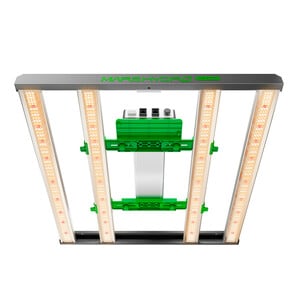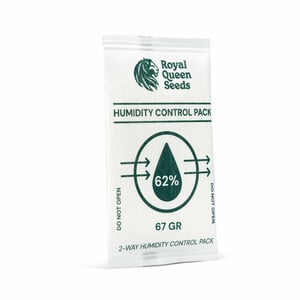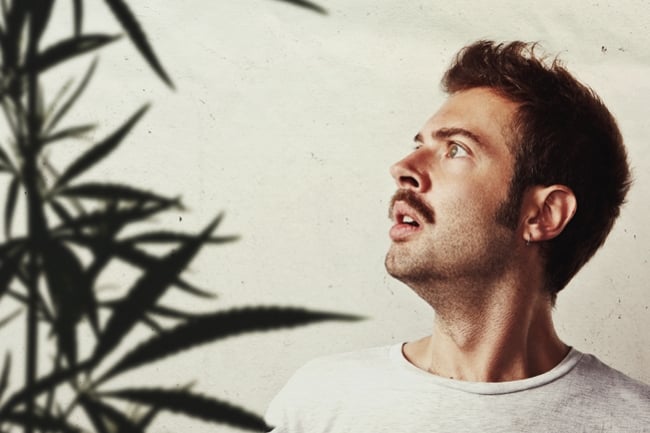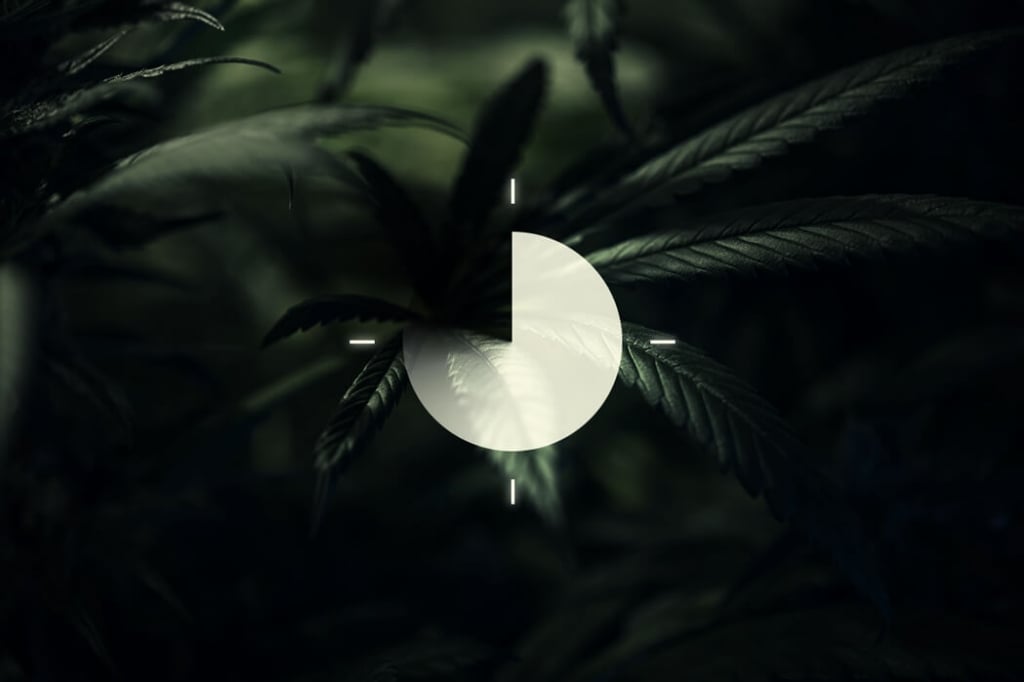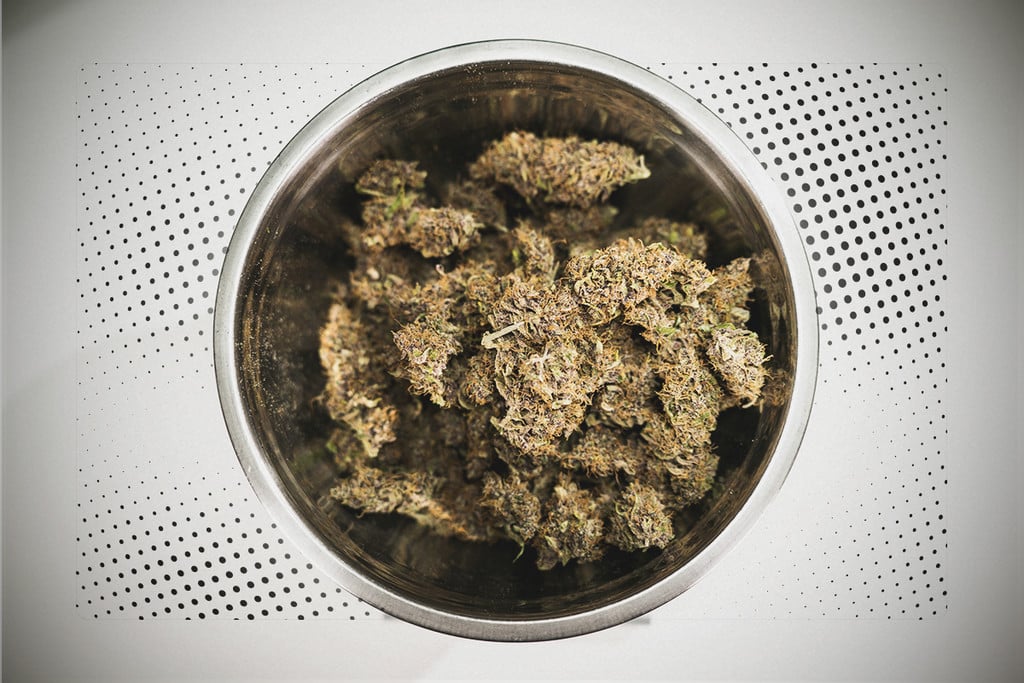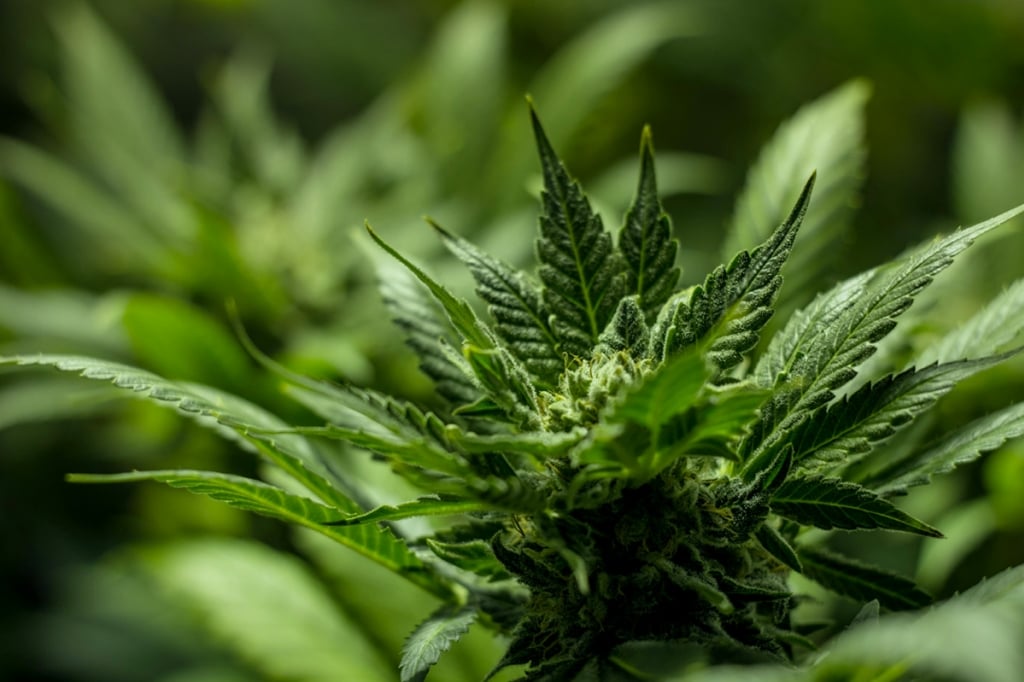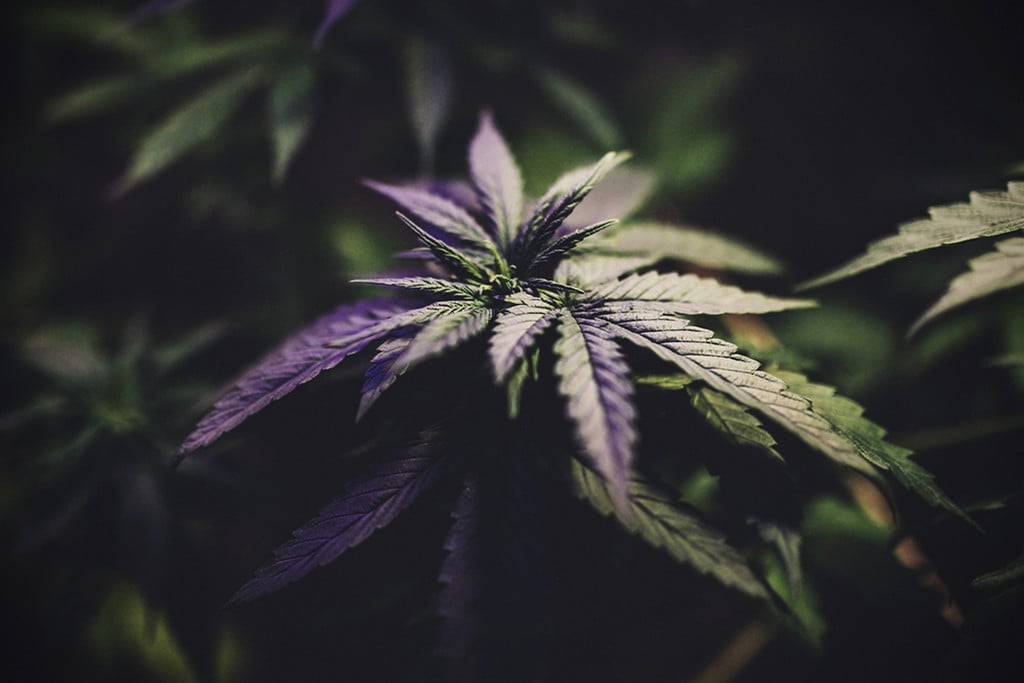 Weed Grow Guide by Royal Queen Seeds
Weed Grow Guide by Royal Queen Seeds
- Growing weed step by step
- Cannabis growing basics
- Choosing your seeds
- How to germinate seeds
- The cannabis vegetative stage
- The cannabis flowering stage
- Harvesting cannabis
- Trimming, drying, and curing
- Choosing pots and soil
-
Growing indoors
- A Complete Overview Of Growing Cannabis Indoors
- Cannabis Cultivation Tips: How To Set Up Indoor Grow Lights
- How Many Cannabis Plants Can You Grow Per Square Metre?
- Indoor Cannabis Growing: Relative Humidity and Temperatures
- Hydroponics Cannabis Growing Guide (with diagrams)
- Cannabis Micro Growing: Growing Great Weed in Tiny Spaces
- Growing outdoors
- How to grow autoflowering cannabis
- Cannabis nutrients and pH
- Cannabis troubleshooting: Nutrients
-
Cannabis troubleshooting: Growing
- Cannabis Seed Germination — Troubleshooting Guide
- How to Deal With Pythium (Root Rot) in Cannabis Plants
- Slow Cannabis Plant Growth And What You Can Do About It
- How to Deal With Leggy Cannabis Seedlings
- Watering Your Cannabis: How to Fix Overwatering and Underwatering
- Understanding Male, Female, And Hermaphrodite Cannabis
- Identifying and Treating Common Cannabis Ailments
- How To Revive a Sick Cannabis Plant
- How to Avoid Mouldy Weed During Drying and Curing
- How to Prevent and Treat Dry and Crispy Cannabis Leaves
- What Cannabis Leaves Can Tell You
- Causes and Solutions for Yellow Cannabis Leaves
-
Cannabis Strains Grow Report
- HulkBerry Automatic Grow Report
- Blue Cheese Auto Grow Report
- Purple Punch Automatic Strain Grow Report
- Triple G Automatic Grow Report
- Do-Si-Dos Automatic Grow Report
- Green Gelato Automatic Grow Report
- Haze Berry Automatic Grow Report
- Purple Queen Automatic Grow Report
- Cookies Gelato Automatic Grow Report
- Sherbet Queen Automatic Grow Report
- Sweet Skunk Automatic Grow Report
- Medusa F1 Grow Report
- Cannabis plant training
-
Weed growing tips
- The Cannabis Plant Anatomy
- How to preserve seeds - UK
- How Much Sunlight Do Outdoor Cannabis Plants Need To Grow?
- How to Control and Prevent Stretching in Cannabis Plants
- My Cannabis Plants Are Growing Too Tall: What Should I Do?
- Should You Worry About Purple Or Red Cannabis Stems?
- What To Do When Your Indoor Cannabis Won’t Flower
- How To Protect Your Cannabis Plants From Heat Stress
- How To Tell If Your Female Cannabis Plant Has Been Pollinated
- Growing Medical Marijuana
- Bud Washing: How to Clean Your Weed
- Understanding Cannabis Yield per Plant
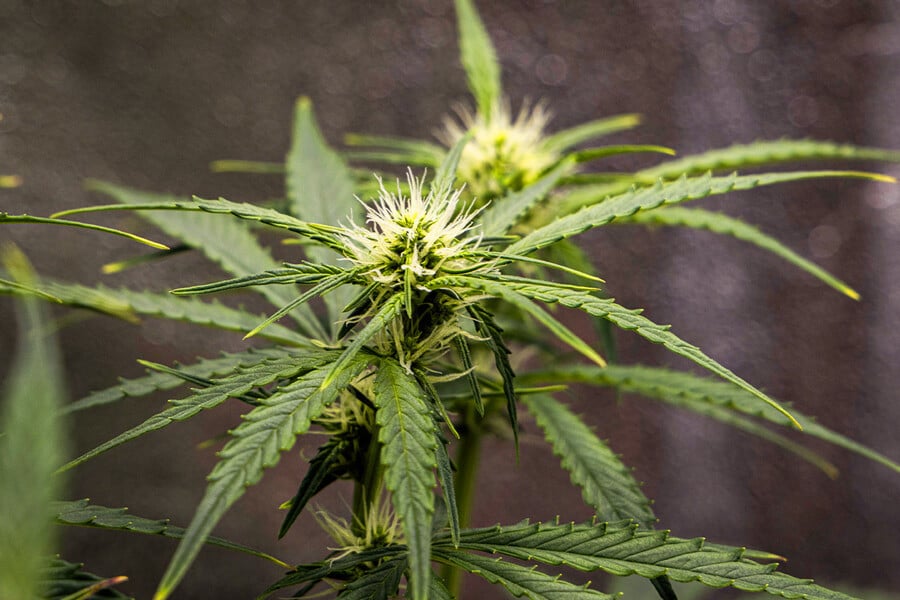
When to Switch From the Vegetative to the Flowering Stage
Contents:
If you’ve just begun to learn about the strange ways of cannabis plants, you’ve likely discovered that they flip from vegetative growth to flowering at some point in their life.And even if you’re well aware of this change, you may still want to know more about this crucial transition period. Determining the optimal time to transition cannabis plants from the vegetative to the flowering stage is a key decision that can significantly impact the health of the plant and the quality of the final yield.
Many growers grapple with questions regarding the ideal number of weeks for vegetation, the necessary node development, and whether there is a standardised approach to initiate flowering. This article aims to answer these questions, providing a comprehensive overview of the critical factors influencing this crucial phase.
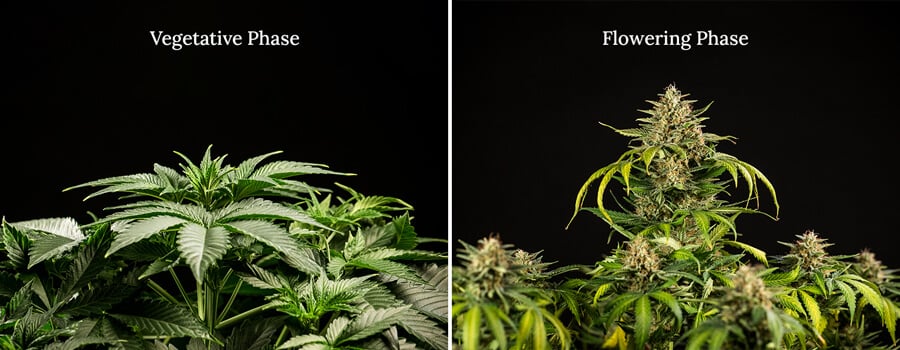
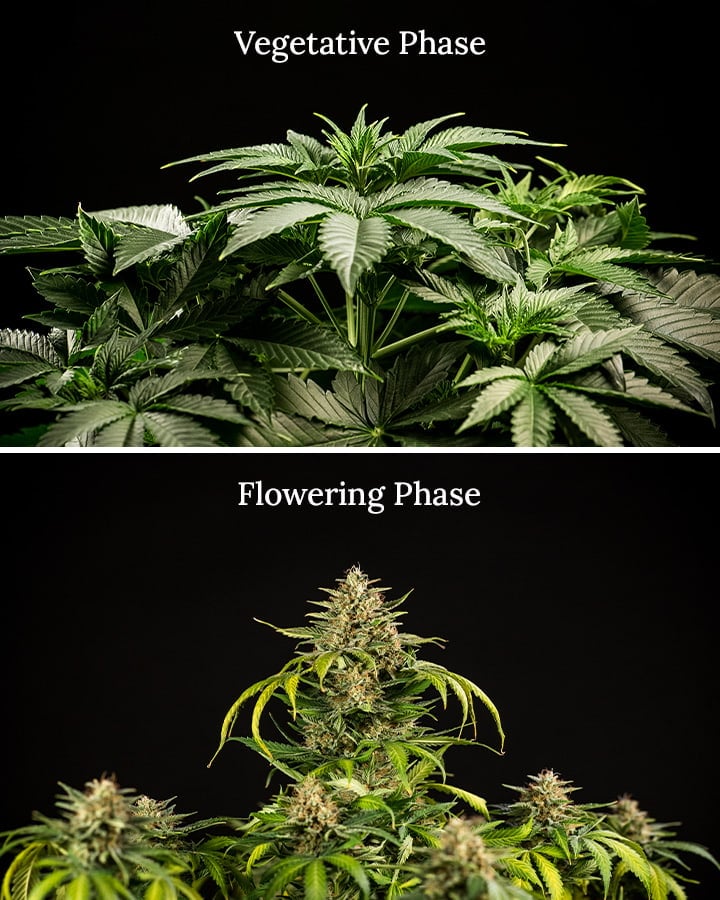
Understanding the Veg-to-Flower Transition
All cannabis plants that make it to maturity will switch from the vegetative stage to the flowering stage at some point. Some will do it as a natural result of being under the sun, others will do it automatically based on a genetically coded internal clock, and others—grown indoors—will need our help to make this change.
The Science Behind the Switch
Transitioning from vegetative growth to flowering is a process that is mostly determined by photoperiod—the number of light and dark hours a plant is exposed to daily—with the exception of autoflowering plants, which contain ruderalis genetics.
In controlled environments like indoor grows, manipulating the light cycle to 12 hours of light and 12 hours of darkness initiates flowering in photoperiod plants. In nature, cannabis plants begin to produce flowers once the daylight hours drop below 12. This change in light signals the end of summer and the oncoming winter, at which point the cold will kill off the plants. Therefore, they enter the flowering stage at this point, causing the females to produce flowers (and seeds) and the males to produce pollen sacs. This is how cannabis babies are made.
As the female plants die, the flowers dry and the newly formed seeds drop onto the ground below, where hopefully some of them will sprout the next spring.
Indica vs Sativa vs Ruderalis: How Genetics Affects the Transition
Genetics plays a significant role in how cannabis plants respond to changes in the light cycle. Autoflowering strains—derivatives of Cannabis ruderalis—do not require any changes in light duration to bloom; they automatically flower based on age. This is because they come from northern regions of Siberia and surrounding regions, where light levels are very high all summer, then winter arrives abruptly. Therefore, plants in these regions adapted to flower automatically, rather than relying on light levels. In modern cannabis cultivars, this genetic trait has been harnessed to create short-lived but robust cannabis strains, and these needn’t be manually “flipped” to flowering—they will do it by themselves.
Regarding indica and sativa photoperiod varieties, both will need to be manually flipped to flowering indoors, or will naturally flower outdoors when the seasons tell them to. However, there are some notable differences regarding indica versus sativa genetics when it comes to the flowering transition.
Indica varieties tend to reach flowering readiness quicker than sativas, often requiring a shorter vegetative period to reach their ideal shape and size. This is because indicas generally come from colder parts of the world, whereas sativas prefer tropical regions where they can take their time. However, in constrained spaces or when faster cycles are desired, shortening the vegetative stage of sativa strains is possible, albeit at the potential cost of yield size.
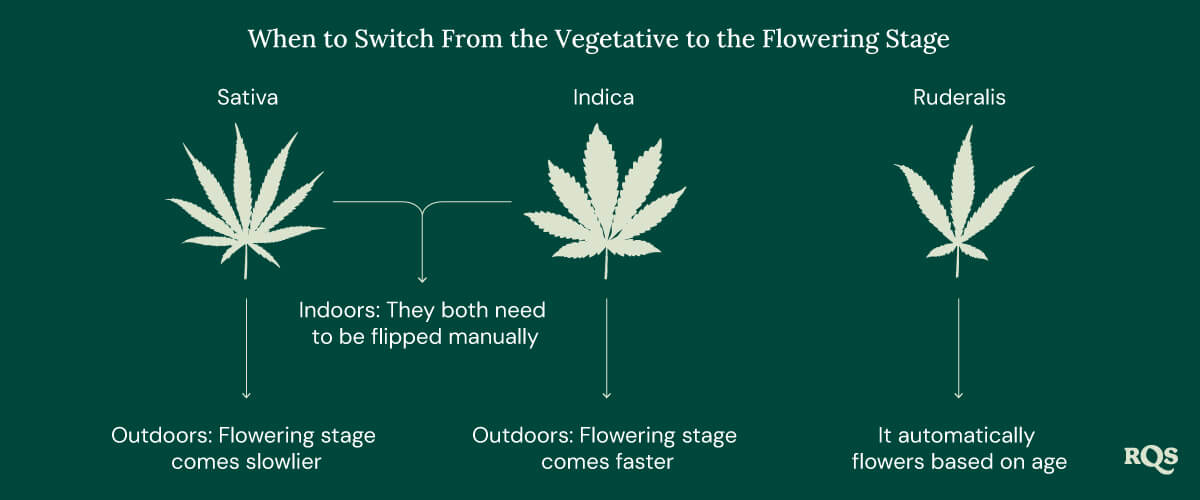
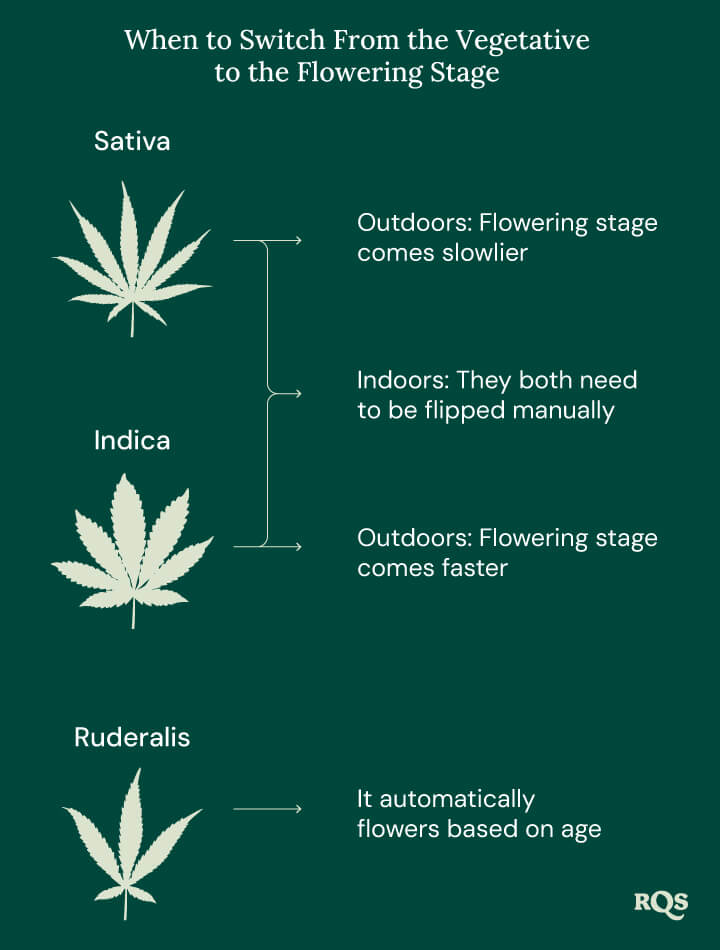
When to Switch to a 12/12 Light Cycle
Shifting to a 12/12 light cycle is crucial for stimulating the flowering stage in photoperiod strains. So below, we’ll try to answer the question of when to make this change. Ultimately, it will depend on factors that relate to the specific strain, the grow space, and your requirements.
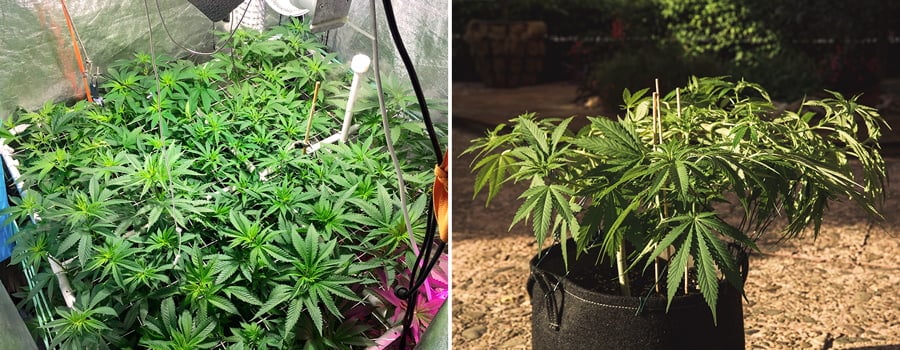
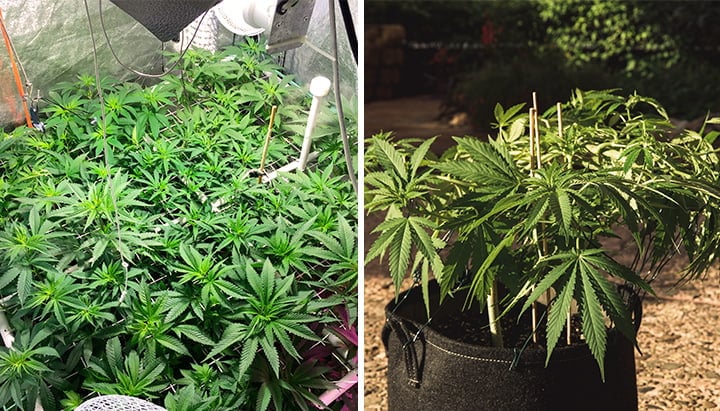
Preparing to Transition From Veg to Flower
Proper preparation can significantly ease the transition from the vegetative to the flowering stage, enhancing the plant's response and overall yield quantity and quality. Preparing doesn’t take much work, but it will pay dividends, so don’t skimp on this step.
-
Dial in Your Lighting
Adjusting your lighting setup to suit the flowering stage involves not only changing the light cycle but also ensuring the light intensity and spectrum are appropriate for promoting robust flower development.
If you use LED grow lights, which we suggest, then this step is pretty easy. Good-quality lights will most likely have “veg” and “bloom” settings. The “veg” setting will emit more blue light, mirroring spring and summer, while the “bloom” setting will emit more red light, mirroring late summer and autumn. Other lights, such as HID lights, have dedicated lamps for vegetation (metal halide) and flowering (high-pressure sodium).
Mars Hydro FC3000 – 300 W LED Grow Light
|
|
660-665nm, 2800-3000K, 4800-5000K |
|
|
59.5x54x6.1 cm |
|
|
300W±5% |
|
|
2.85μmol/j |
|
|
855μmol/S |
|
|
Samsung LM301H EVO |
|
|
90x90 cm |
|
|
3.5g/watt |
Buy Mars Hydro FC3000 – 300 W LED Grow Light
-
Switch to Blooming Nutrients
As the plant transitions, it requires different concentrations of nutrients. Phosphorus and potassium are more critical during flowering, and help to develop strong, healthy flowers. Nitrogen, on the other hand, is less in demand. Bloom nutrients will contain the necessary ratios, so you should just follow the instructions.
For reference, the NPK ratios for the different stages are:
- Veg: 3:1:1
- Early flowering: 1:3:2
- Late flowering: 0:3:3
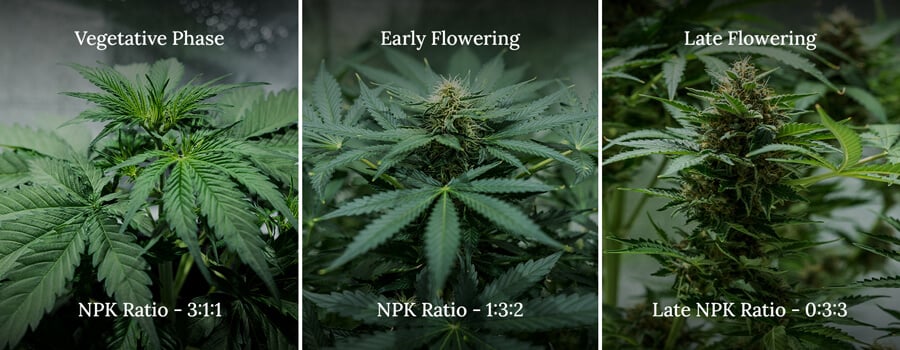
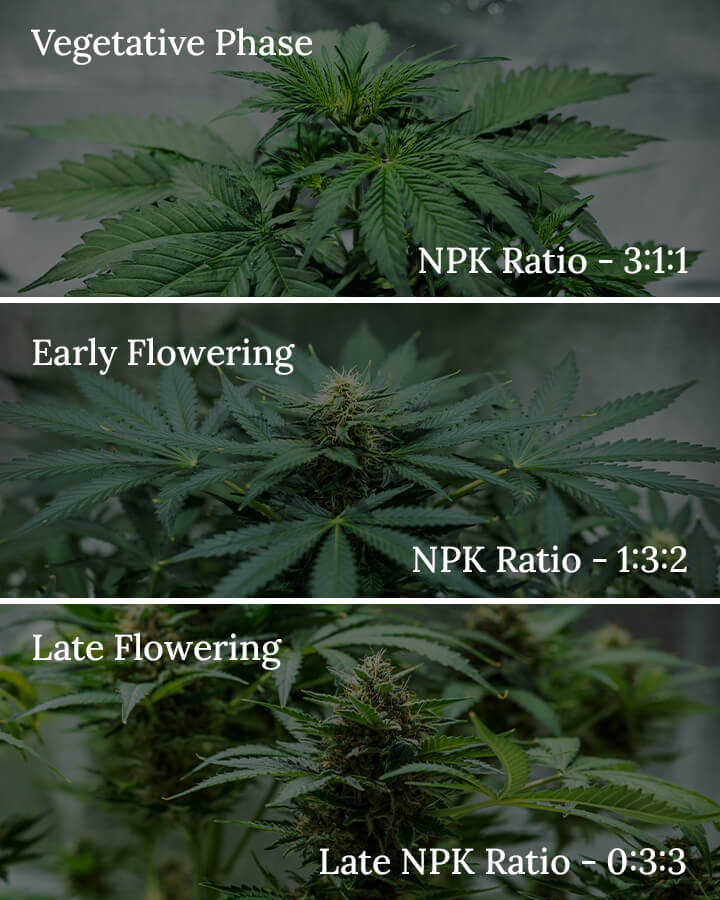
-
Stretch Management
Managing plant stretch through techniques such as defoliation or adjusting light intensity can help to maintain a compact, manageable plant size. This can also be achieved by employing training techniques.
All stretch management techniques are best used before the plant stretches, in anticipation. Responding after stretching has happened is never optimal. Plus, if you respond in such a way that stresses the plant, you must give it more time to veg before switching it over to flowering.
-
Taming Humidity
The flowering stage often requires lower humidity levels to prevent mould and promote optimal transpiration, which is essential for nutrient uptake and growth. Humidity can be kept low with a fan and/or a full ventilation system. Still air will become humid, and is more likely to foster pathogens. With a good setup, managing humidity should be fairly straightforward.
-
Defoliation
Defoliation can improve light penetration and airflow to lower branches, helping with more even bud development and reducing the risk of moisture-related issues. This technique is beneficial in preparation for flowering, and also very helpful during the flowering stage, as it can help to redirect energy to bud production.
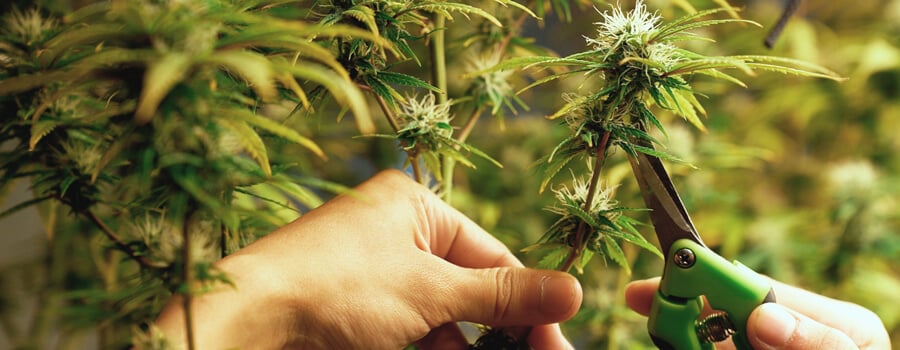
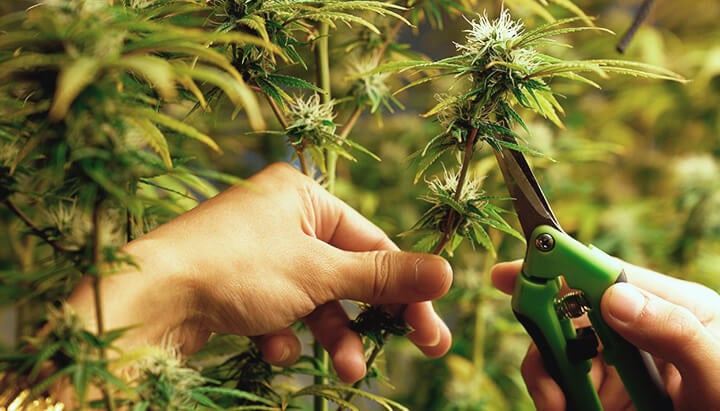
Mistakes to Avoid When Switching Weed Plants From Veg to Bloom
Below, find some common mistakes that growers fall victim to when making the switch from the vegetative to the flowering stage.
-
Too Much or Too Little Light
Providing the right amount of light is critical—it almost goes without saying. Too little can lead to sparse, airy buds, while too much can stress plants, leading to issues like bleaching or heat stress.
Getting the lighting right requires two steps. First, you need to have the right kind of lights—those that are powerful enough and give off the right light spectrum. All good-quality grow lights will do this. Second, and this is more down to you, they need to be positioned correctly. Too close, and they will be too strong; too far, and they will be too weak.
LEDs can be quite close to plants as they’re unlikely to burn or bleach them. But they should still be far enough to get a good spread. Distances differ a little between models, so check the manufacturer instructions to know how to position yours.
HID lights pose more of a risk when it comes to bleaching and burning. These should be positioned somewhere between 25cm and 55cm, depending on the wattage.
-
Excess Nitrogen
During the transition, reducing nitrogen in favour of phosphorus and potassium is essential. If you fail to make this adjustment, you will simultaneously overfeed and underfeed your plant. It will at once be at risk of nutrient burn or lockout from too much nitrogen, but will also produce inadequate flowers due to a deficiency of potassium and phosphorus. So make the change!
-
Switching Too Early or Too Late
Timing the switch is crucial for maximising yield and efficiency. Too early, and plants may not be mature enough to flower optimally; too late, and plants might overgrow their space or waste energy on unnecessary vegetative growth.
Knowing when to make the switch depends on the size of your space, the desired overall grow time, the characteristics of the specific strain(s) you’re growing, and your desired final yield.
What to Do if Plants Don't Respond
Sometimes, despite our best efforts, plants do not transition smoothly. If this happens, consider reviewing your grow conditions, and consult our dedicated articles for more information:
- Indoor Troubleshooting: What To Do When Your Homegrown Cannabis Won't Flower
- Outdoor Solutions: How to Force Cannabis Flowering Outdoors
Cultivating Cannabis: Master the Switch
With a comprehensive understanding of the vegetative to flowering transition, you are well-prepared to manage your grow for optimal results. By adjusting cultivation techniques based on plant genetics, grow space characteristics, and individual plant needs, you can effectively enhance your plant's health and maximise your yields. Stay adaptable, monitor your plants closely, and be ready to tweak your approach as they develop.
 Grow Guide Topic Finder
Grow Guide Topic Finder
- Growing weed step by step
- Cannabis growing basics
- Choosing your seeds
- How to germinate seeds
- The cannabis vegetative stage
- The cannabis flowering stage
- Harvesting cannabis
- Trimming, drying, and curing
- Choosing pots and soil
-
Growing indoors
- A Complete Overview Of Growing Cannabis Indoors
- Cannabis Cultivation Tips: How To Set Up Indoor Grow Lights
- How Many Cannabis Plants Can You Grow Per Square Metre?
- Indoor Cannabis Growing: Relative Humidity and Temperatures
- Hydroponics Cannabis Growing Guide (with diagrams)
- Cannabis Micro Growing: Growing Great Weed in Tiny Spaces
- Growing outdoors
- How to grow autoflowering cannabis
- Cannabis nutrients and pH
- Cannabis troubleshooting: Nutrients
-
Cannabis troubleshooting: Growing
- Cannabis Seed Germination — Troubleshooting Guide
- How to Deal With Pythium (Root Rot) in Cannabis Plants
- Slow Cannabis Plant Growth And What You Can Do About It
- How to Deal With Leggy Cannabis Seedlings
- Watering Your Cannabis: How to Fix Overwatering and Underwatering
- Understanding Male, Female, And Hermaphrodite Cannabis
- Identifying and Treating Common Cannabis Ailments
- How To Revive a Sick Cannabis Plant
- How to Avoid Mouldy Weed During Drying and Curing
- How to Prevent and Treat Dry and Crispy Cannabis Leaves
- What Cannabis Leaves Can Tell You
- Causes and Solutions for Yellow Cannabis Leaves
-
Cannabis Strains Grow Report
- HulkBerry Automatic Grow Report
- Blue Cheese Auto Grow Report
- Purple Punch Automatic Strain Grow Report
- Triple G Automatic Grow Report
- Do-Si-Dos Automatic Grow Report
- Green Gelato Automatic Grow Report
- Haze Berry Automatic Grow Report
- Purple Queen Automatic Grow Report
- Cookies Gelato Automatic Grow Report
- Sherbet Queen Automatic Grow Report
- Sweet Skunk Automatic Grow Report
- Medusa F1 Grow Report
- Cannabis plant training
-
Weed growing tips
- The Cannabis Plant Anatomy
- How to preserve seeds - UK
- How Much Sunlight Do Outdoor Cannabis Plants Need To Grow?
- How to Control and Prevent Stretching in Cannabis Plants
- My Cannabis Plants Are Growing Too Tall: What Should I Do?
- Should You Worry About Purple Or Red Cannabis Stems?
- What To Do When Your Indoor Cannabis Won’t Flower
- How To Protect Your Cannabis Plants From Heat Stress
- How To Tell If Your Female Cannabis Plant Has Been Pollinated
- Growing Medical Marijuana
- Bud Washing: How to Clean Your Weed
- Understanding Cannabis Yield per Plant


























